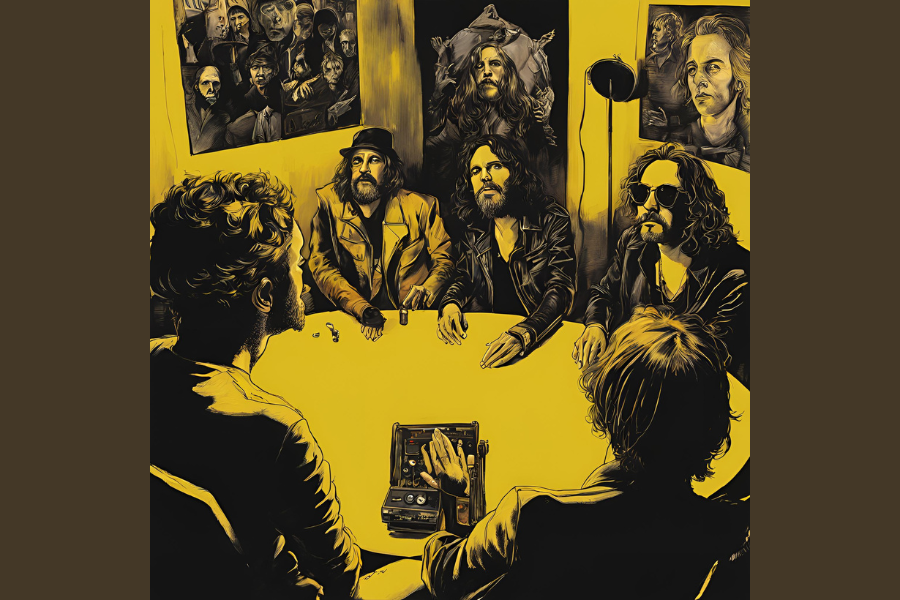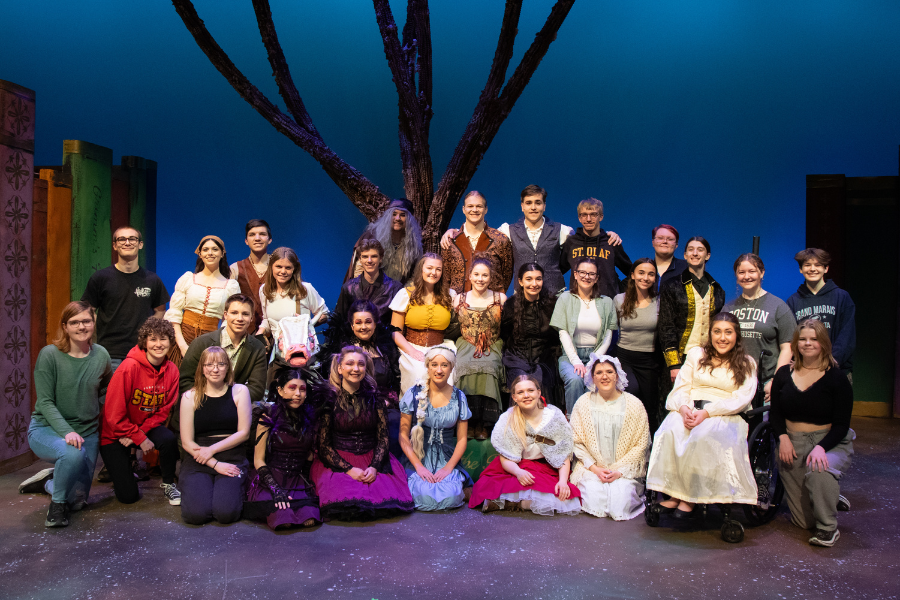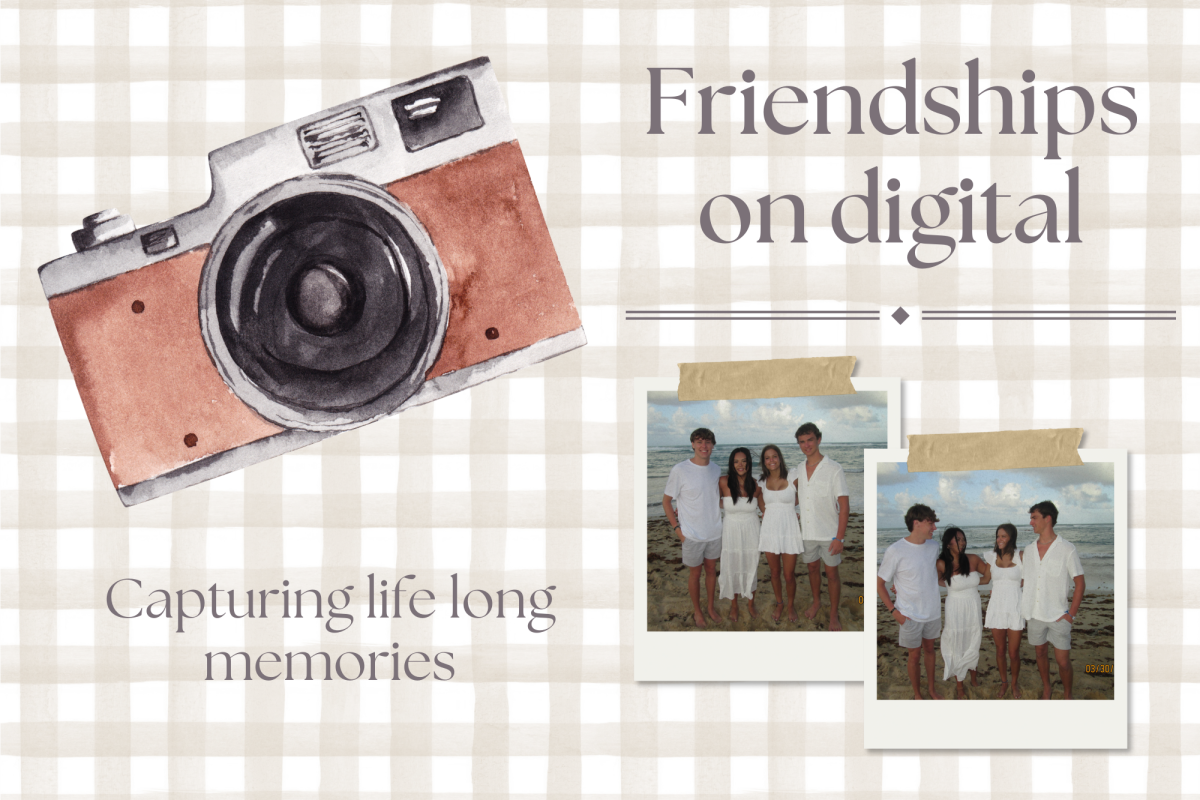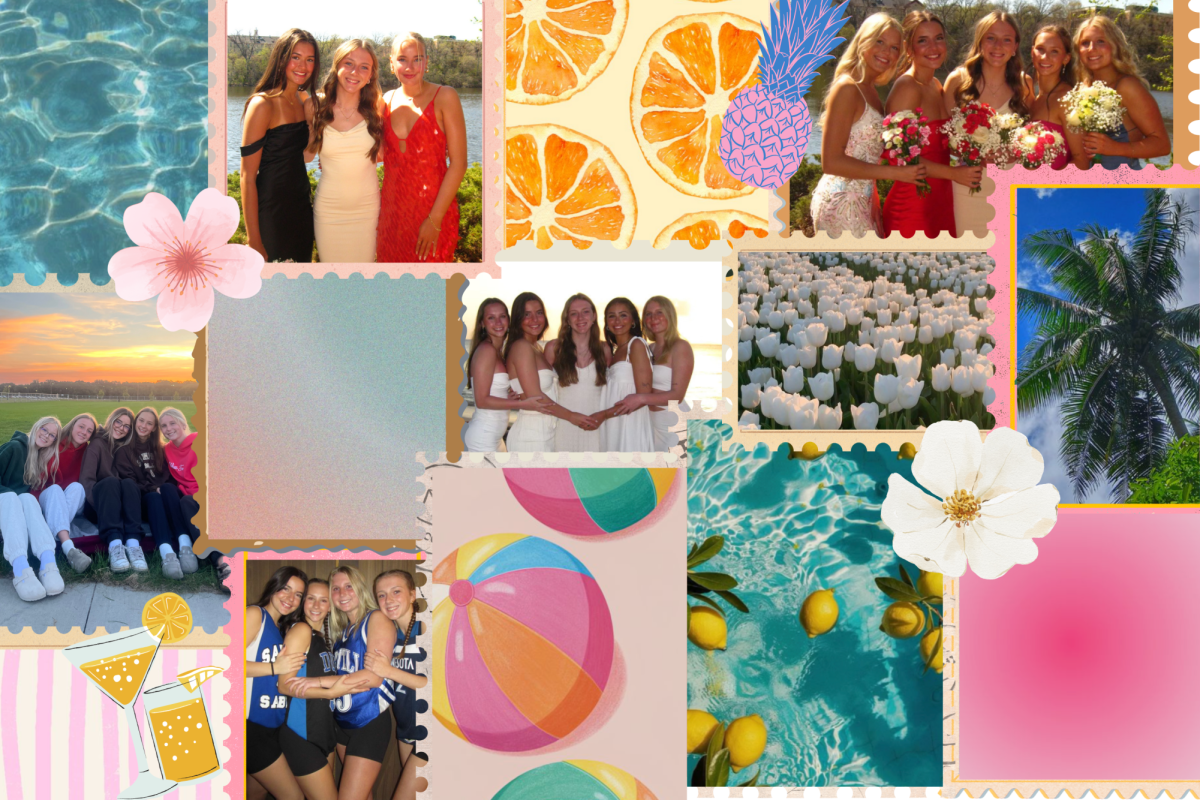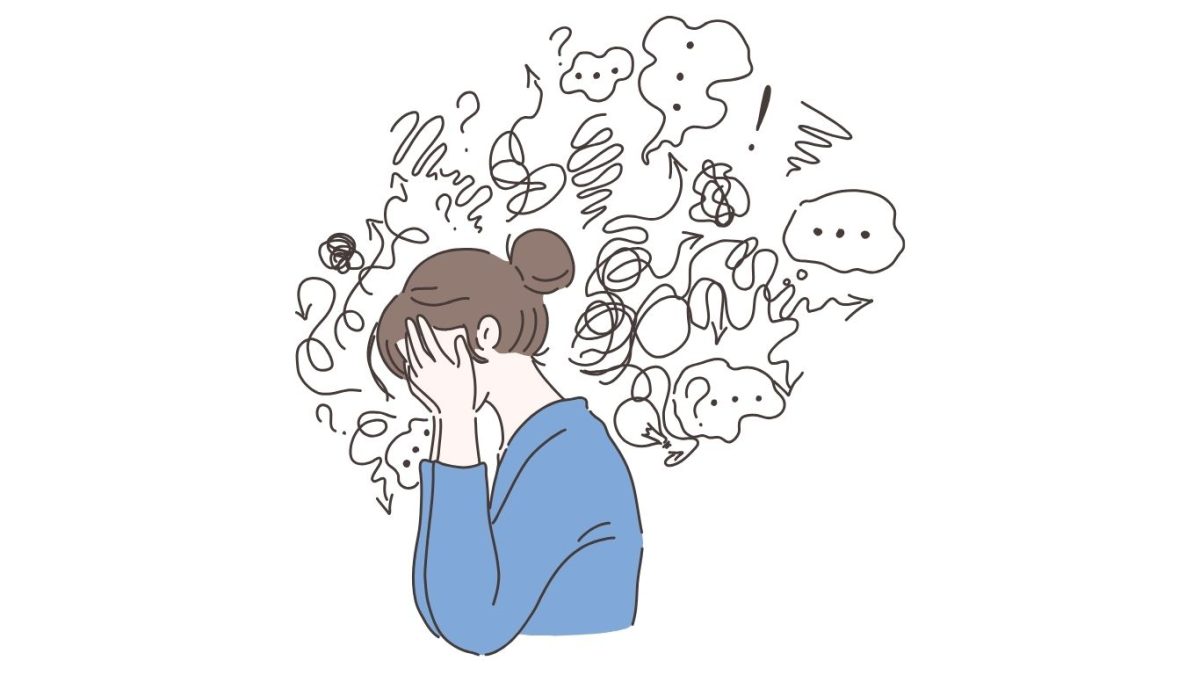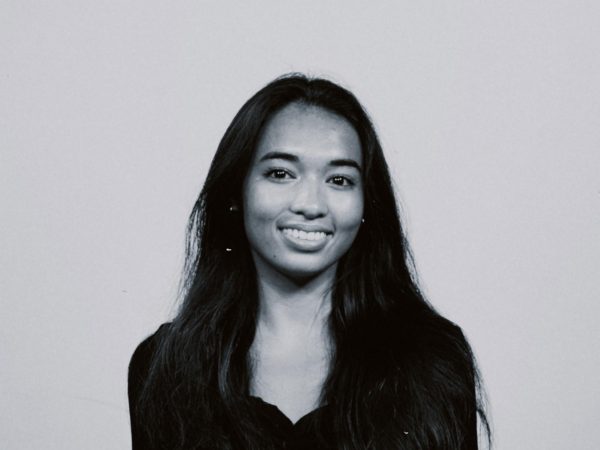What’s the difference between a girl and a woman? A doll-faced child dressed in pink, hair pulled back into tightly woven braids that reveal the youth within her eyes, skips gleefully outside the gas station, stained lips pursed around a bottle of Gatorade. Beside the child walks an older figure, folding her jacket over her chest. The two are obviously different, but both are female, each with a matching set of organs within their bodies that seem to be able to determine the path of their lives. At first glance it’s apparent, the divide between a girl and a woman, but as the world places more fingerprints upon the body of the doll-faced child, it becomes unclear if there is anything at all to differentiate the two. The transition into womanhood isn’t marked by a menstrual cycle, becoming a mother, or the number of candles delicately arranged on a sprinkle-dusted cake. In my experience, womanhood is the maturity that comes with overcoming obstacles and an understanding of oneself, rather than the aging of one’s body.
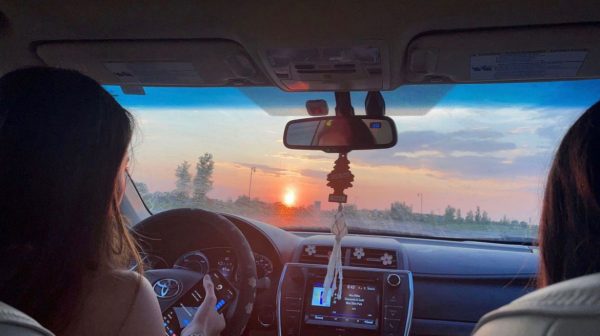
As a girl, I always drove with my sunroof open. I listened to loud music, always twisting the stereo knob until the rhythm of my heartbeat was matched by the deafening bass. I liked it that way; to me, girlhood meant liking how the August sun fell upon my shoulders and the way that the open windows allowed the wind to tousle my hair. Likewise, I left my heart unguarded. Girlhood meant being told I was too sensitive, that I displayed my emotions too much, so that everyone could see. Maybe this made me more vulnerable, but to me, the risk of a little rain was easily outweighed by the juvenile joy I felt on those late summer drives.
Summer left as fast as it came, and a rainy autumn arrived in August’s absence. I refused to be afraid of the rain. I still drove with my sunroof wide open, but my music was somber now, and with every drop of rain that cascading down my cheek, a silent tear fell with it. The two were undistinguishable, and soon, it was unclear which one was responsible for drenching my clothes and ruining my freshly straightened hair. I was drowning, and no one could even see it. Regardless, I kept driving, with my sunroof open and my foot on the gas. I gave my all to my many college-level classes, a job, dance team, and a social life, it was nearly impossible to keep up. I began to feel burnt out, but decided I would keep pushing through, after all, a little rain never hurt anyone.
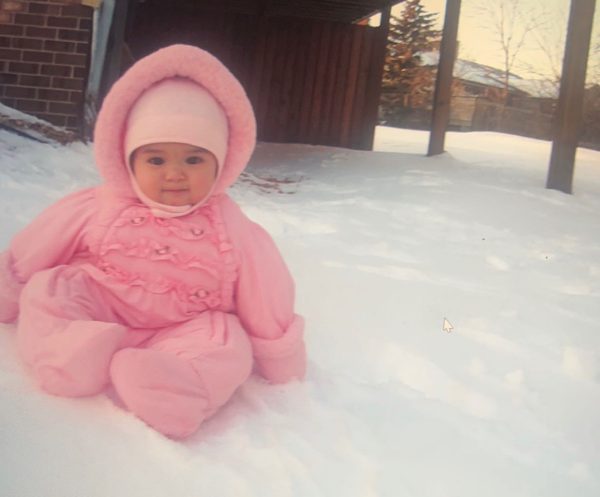
Rain turned to snow and eventually, it was December. Winter was just as bitter as it always had been. Though the white-painted fields were beautiful, the icy roads and frostbite made colder months seemingly unbearable. Everything was too much. It wasn’t just the weather; it was school, my family, my friends, life. Finally, somewhere in between being a girl and a woman, my sunroof closed.
In late winter of my junior year, when the sun had begun to melt the snow into a dirty sludge, I was officially diagnosed with General Anxiety Disorder and Bulimia Nerviousa. Between panic attacks while changing classes and tearful mornings spent blending concealer under my perpetually damp eyes, it felt unmanageable. I stopped going to school, and the drives to Panera with my sunroof open, which used to excite me, became nothing short of a true nightmare. Despite being surrounded by people who loved me, I had never felt as lonely as I did then. I didn’t even recognize the girl I saw in the mirror. Instead, my reflection was replaced with someone cold and unfeeling, the barrier protecting her heart built too tall for anyone to get through. The only thing to break up my constant state of emptiness were my ever-persistent anxiety attacks.
I hit rock bottom the day before my spring break. I was excited for the vacation my family planned to take, but I could feel the anxiety bubbling over. I spent most of that day crying in the school bathroom, nauseous from the anxiety. That night, as I began my 20 hour flight to the Philippines, I blasted music through my headphones, as an attempt to drown out all of the thoughts still lingering in my head. “Stubborn Love” by the Lumineers played, and its lyrics brought me to instant tears. Suddenly, everything made sense: “It’s better to feel pain, than nothing at all.”

Nine words. Six months of a seemingly constant panic, followed by three months of emptiness, and somehow it only took nine words for me to feel whole again. While I used to dissociate from my feelings to avoid uncomfortable emotions, now I felt confined by my own emotional barriers.
I realized a lot about myself on that flight. I hated my life, and myself. I used to find so much joy in waving to my friends in between classes, but now, I lowered my head at the sight of them. I hated the way I didn’t have the energy to check up on the people I loved anymore. Even more so, I missed being a teenage girl. I could find traces of one around my room: the Taylor Swift vinyls lining my wall, my bookshelf, the medals hanging in the corner. I wanted to be her again and was determined to do whatever it took to be her again.
It was the seemingly little steps that made the most difference, and with each one I took a little of myself back. It started with cleaning up the piles of trash, and putting away the piles of clothes that I had allowed to remain untouched in what I called my “depression room,” then my missing assignments cleared up, and soon I was going out again, climbing trees and reading books. I had opened my sunroof again.
It was springtime now, and finally, I was able to feel the fresh April air through my hair again. “Stubborn Love” was constantly blasting through my car speakers, and my friends and I spent a lot of time driving after sunsets together, our hands sticking out of open windows.
I scream the lyrics that saved my life six months ago: “It’s better to feel pain, than nothing at all!” I had found myself again, but I wasn’t the girl I used to be. My experience battling my mental health was impactful to nearly every aspect of myself, especially my perspective on life. My perseverance through hardship is what defines me as the empathetic, creative, driven, and thoughtful woman I’ve become, rather than the anxious little girl I used to be.
I knew boundaries, and though I never missed an opportunity to let the wind blow through my hair on a bright summer day, I knew to close it when it rained. I got the help I needed, made a full recovery from my bulimia, and got to a place with my anxiety where my life was manageable.
Though my months spent mentally ill were draining, I will forever be grateful for the journey. My mental health experience has allowed me to become my own muse, my creative mind taking joy in working on the greatest project of a lifetime, myself.





